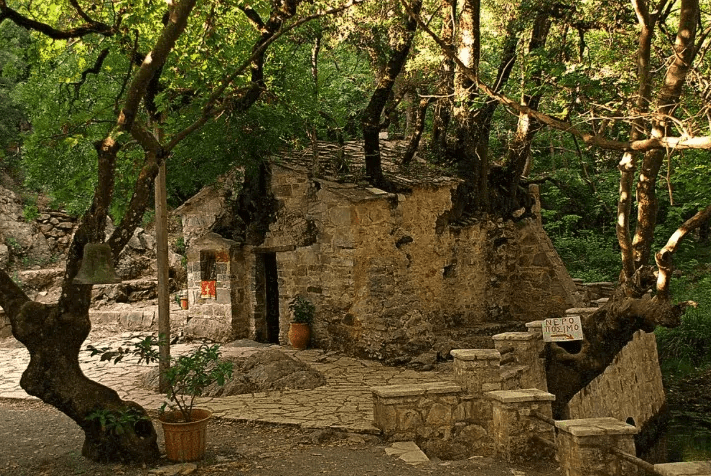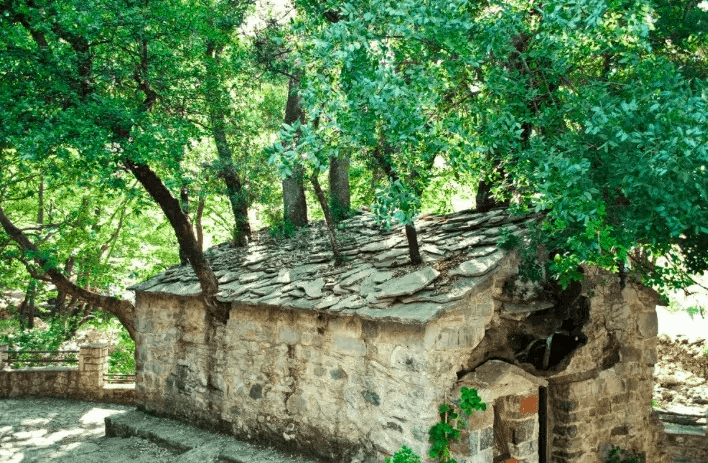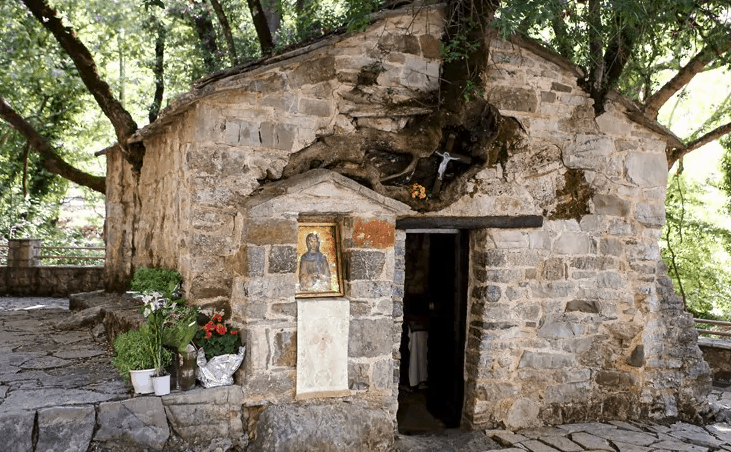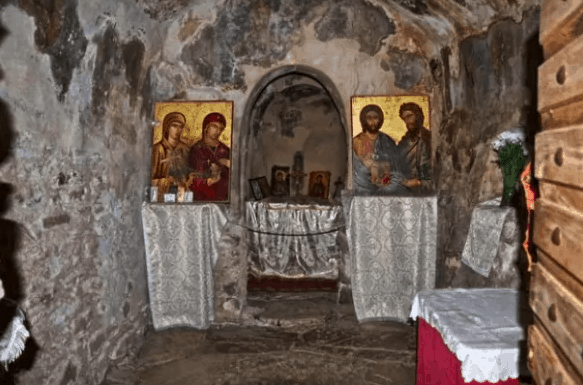
The holy and glorious Virgin-martyr Theodora of Vasta, Arcadia, Megalopolis, of the Peloponnese in Greece, is commemorated by the Greek Orthodox Church on September 11.
Agia Theodora lived during the tenth century on the Peloponnesus in Greece, near the border between the regions of Messenia and Arcadia in a town called Vasta. When the area was raided by bandits, Theodora was determined to help defend her village, but as a woman, it was unthinkable to do so. Not to be deterred, Theodora secretly disguised herself as a male soldier in order to join the defenxe. Unfortunately, Theodora did not survive, and as she lay dying she uttered the following words:
“Let my body become a church, my hair a forest of trees, and my blood a spring to water them.”

The villagers, moved by her bravery and her untimely demise, built a church at the site of her grave. Eventually, trees sprouted from the roof of the church, the roots of which are not visible under the roof and neither inside or outside the church.
Her story is often mistakenly combined with that of St Theodora of Alexandria, who cut her hair, dressed in men’s clothing and entered the Monastery of Octodecatos, under the male name of Theodore. A promiscuous young woman slandered her, saying that Theodore had made her pregnant.

The Chapel of Agia Theodora is located just outside the village Vasta of Megalopolis in the Peloponnese of Greece. It was built between the 10th and 12th centuries. According to tradition, the construction of the church is intimately linked with the martyrdom of Theodora.

This small chapel supports 17 holly and maple trees that emerge from the roof and the walls of the chapel. Each tree weighs close to a tonne and stands over 20 metres high. For hundreds of years, the roots have not been visible. Locals could not find a scientific explanation for this phenomenon.
Many researchers have spent years studying this structure, even X-raying the walls, but have no explanation for the roots of the trees. In 2003, a geophysical report was presented at the 4th Symposium of Archaeometry in Greece. The results of this investigation proved that the roots followed the gaps existing inside the stone wall of the chapel creating repulsion stresses between the stones and thus reaching the ground.
The entire building is under considerable pressure due to the large load of the trees and it is a miracle that after hundreds of years, the chapel survives with no damage to the structure or to the trees.

Even more amazing is its tiny barrel-vaulted interior where except for one wispy bit of green there is not one sign of the trees or roots. Another fascinating fact about the location is that a river runs beneath this church and irrigates the trees.
Agia Theodora’s church has become a popular pilgrimage site for Greeks and her feast day is today, September 11.
Thousands and thousands of people from all over Greece travel here to pray.
Agia Theodora Vasta is known to have performed many miracles for those who pray to her.
Xronia Polla!


